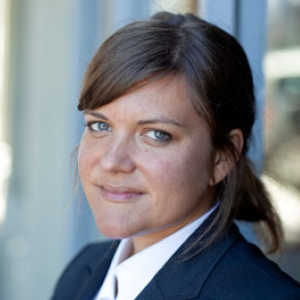As the U.S. enters the spring of 2022, international news dominates headlines. Closer to home, a subtle but fundamental question bears on everyday life: does the subsiding of the winter’s Omicron surge in many parts of the U.S. signal a new phase of the pandemic—a turning of the page on what has come before? If so, what lessons for the future might be drawn from the extraordinary disruption of the last two years?

One place where you’re likely to hear questions like these discussed? Emily Cox Pahnke’s University of Washington classroom. Her course, Grand Challenges for Entrepreneurs, won an Aspen Institute Business & Society Program Ideas Worth Teaching Award for teaching future business leaders to tackle seemingly impossible challenges. Pahnke’s unique pedagogy challenges students to creatively transform constraints into opportunities for positive social impact. That classroom experience gives her optimism about what students emerging from the pandemic and other disruptions will achieve.
![]()
Headlines about the Great Resignation often raise the theme of rethinking purpose at work in the face of societal disruptions like the pandemic. What insights can you share on this trend and how are your students’ perspectives on work shifting?
Students want to make meaning with their work. Happily they don’t see a dichotomy between having a positive impact on the world and their careers in business. The students graduating now have spent the last two years during the pandemic learning how to be flexible and resilient; none of them expected their education to be largely remote. Seeing first-hand how things can change quickly has given them confidence that things can also change for the better—and they seem impatient to make sure that they are part of the positive changes they want to see.
How do the course exercises—such as “Creativity Under Constraint,” “Grand Challenge Term Project,” and “Personal Grand Challenge”—prepare students to take concrete action in their daily lives and future careers?
The goal of assignments in the class is to help students overcome the paralysis we face when trying to address big problems in the world. There is so much ambiguity in tackling important problems, and the assignments ask students to dive into that ambiguity to see what sense they can make.
Creativity Under Constraint asks students to try to create value, however they define it, quickly with limited resources. Key insights that come from that are that they often self-impose constraints that don’t actually exist, and that they learn more by doing something reflecting on the experience than they do from hypothesizing about what might happen if they were to try something.
The term project helps students learn that addressing grand challenges requires narrowing in on a specific group of people or area dealing with the challenge. Narrowing their focus allows them to get closer to problems and to gain empathy for people dealing with them, which in turn helps them to design more effective solutions.
The Personal Grand Challenge assignment asks the students to map out how they can become who they want to be in order to effect the changes they’d like to see in the world. It’s an opportunity for students to reflect on how to get the most out of their educational and work experiences and maximize their impact sooner, rather than connecting the dots later in life.
The pandemic has exposed longstanding cracks in a number of industries, including healthcare and beyond. As entrepreneurs look to transform these challenges into opportunities to create value for society, what questions should they be asking?
A key question is always, “if this problem is worth solving, why hasn’t it already been solved?” What most people discover as they delve into a problem is there are often good solutions, but those solutions haven’t been translated across contexts. This means that a lot of the work to be done needs to focus on bringing solutions to new geographies or groups of people, making them easier or cheaper to access, and partnering with existing organizations that provide those solutions to help expand their reach.
People should also ask themselves how they can best support existing solutions—should they start a new organization or can they better leverage their impact by working for, joining the board of, volunteering at, or donating money to an organization that they think is successfully addressing a problem they care about?
As alumni from your course go into leadership positions across industries and sectors, what is the one lesson that you hope will stick with them throughout their careers?
I hope my students don’t wait until they feel they have the resources and time to begin tackling problems they care about—because circumstances will never be ideal. There’s a quote often attributed to Teddy Roosevelt, “Do what you can, with what you have, where you are.” In class I add, “Start Now!” You don’t need to wait to begin addressing problems that you think are important. We can all take steps now to better understand grand challenges, support people suffering the consequences of them and begin creating and supporting solutions to them.
![]()
Interested in more innovative insights for business education? Browse our complete collection of interviews with outstanding educators, and subscribe to our weekly Ideas Worth Teaching digest!

